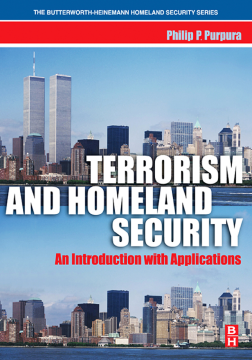
Additional Information
Book Details
Abstract
Terrorism and Homeland Security: An Introduction with Applications provides a comprehensive introduction to the problem of terrorism and to its solution, Homeland Security. In addition to its extensive treatment of terrorism, the book describes public and private sector counterterrorism as well as all hazards emergency management. It presents national, state, and local perspectives and up-to-date information, including the reorganization of the Department of Homeland Security, the renewed Patriot Act, and intelligence reform.
This book covers a wide range of issues, including such topics as the effectiveness of terrorism; weapons of mass destruction; privatization of counterterrorism; and wars of globalization. Learning objectives and key terms outline chapter content and highlight important topics. Scenarios are placed at the beginning of each chapter to explain concepts and relate theory to practice. The book includes Reality Check sections and critical thinking boxes to help the reader to formulate alternative perspectives on issues and events in order to seek creative and improved solutions to problems. At the end of each chapter are discussion questions that reinforce content and provide an opportunity for the reader to review, synthesize, and debate the key issues; applications that use assessment center and red team techniques to help the student develop analytical and decision-making skills in the context of understanding the mindset and planning processes of terrorist; and web links that provide direction for additional resources, information, and research.
This book's primary market are students attending community college homeland security programs, as well as state, federal, and private security training programs. Its secondary market are professionals of the Department of Homeland Security and security professionals belonging to ASIS.
- Learning objectives and key terms outline chapter content and highlight important topics.
- Scenarios are placed at the beginning of each chapter to explain concepts and relate theory to practice.
- "Reality Check" sections and critical thinking boxes help the reader to formulate alternative perspectives on issues and events in order to seek creative and improved solutions to problems.
- Discussion questions at the end of each chapter reinforce content and provide an opportunity for the reader to review, synthesize, and debate the key issues.
- Web links at the end of each chapter provide direction for additional resources, information, and research.
The book explains practical issues, handled by senior government officials, first responders and private security practitioners. Theory from more than 20 disciplines provides a foundation for the book, including criminal justice, international relations, government, psychology, sociology, military science, business, structural engineering and public health.-Morning News, Florence, SC, January 21, 2007
